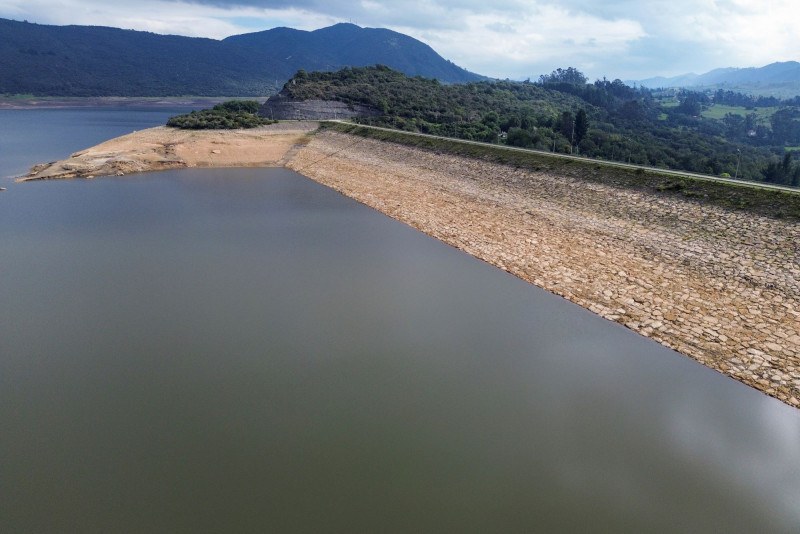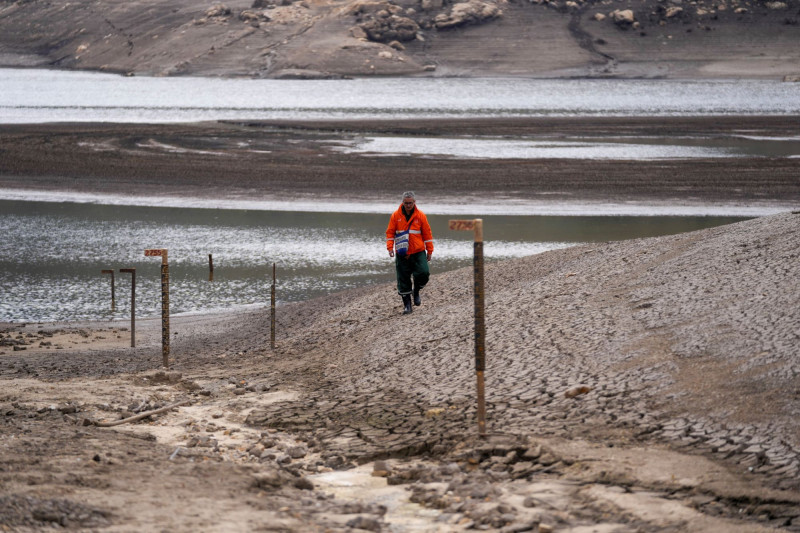Bogotá is one of the highest capital cities in the world as it is over 2,600 meters above sea level and its water supplies depend on rain
Bogotá is taking measures to deal with water shortages threatening nine million residents as water reservoirs have reached “historically low” levels.
The measures came into force on Thursday morning. Bogotá and dozens of surrounding cities have been divided into nine different zones that cut off running water for domestic use for 24 hours in each zone with a rotation that will restart every 10 days. The measures will affect around 9 million people.
Restriction measures for the first time
Bogotá is one of the highest capital cities in the world as it is located at an altitude of more than 2,600 meters above sea level and its water supplies depend on rain.
Contingency plans are in place to ensure schools and hospitals have continuous supplies, authorities said.
The measures are part of emergency plans introduced by the Colombian government and the city’s mayor after reservoirs reached “historically low” levels.
The tanks Chuza and San Rafael, part of the Chingaza system which provides 70% of the city’s drinking water, are in particularly critical positions, according to the local authorities.
“Let’s not waste a single drop of water in Bogotá right now,” Mayor Carlos Fernando Galán said at a press conference on Monday, adding, “this will help us lift these restrictions more quickly or reduce them.”
Galán called for “a change in the use of water that will ensure over time that the reserves will be enough for everyone”, adding that some of the reservoirs have water reserves less than 20% compared to the average of this region. season of the year.
It is not unusual for Latin American cities to experience water crises. Bogotá borders Mexico City to its northwest, which could also be on the brink of water shortages as a combination of climate change, El Niño, geography and rapid urban growth put enormous pressure on its water resources.
But this is the first time in recent history that Bogotá has been forced to implement water-restriction measures.
Waiting for the rain
Bogotá is located on a plateau while to its east, are the peaks of the Andesto its west is a verdant valley crossed by the Magdalena, Colombia’s largest river and a vital source of water.
Moisture from the rainforests along the Magdalena rises in the mountain valleys and merges with the cooler temperatures at the top, causing rain. Rain is quite common in the city, which relies heavily on it for its water needs.
“Most cities around the world depend on aquifers for their water supply. Bogotá is different in that almost all of our supply comes from surface water such as reservoirs, which are more sensitive to rainfall,” said Armando Sarmiento, professor of ecology at Javeriana University in Bogotá.
This reliance on rain is what makes Bogotá particularly vulnerable to drought, Sarmiento said.
Since last year, the city has experienced long periods of drought due to the effects of El Niño, according to local authorities.
El Niño is a natural phenomenon originating in the Pacific Ocean along the equator that affects weather around the world. In Colombia, it has caused higher temperatures and lower rainfall.
In a country as politically divided as Colombia, there is rarely a consensus on how to deal with El Niño. The government issued a natural disaster decree in January to mobilize resources in an effort to combat its devastating effects, including fires and water shortages.
The measures have the approval and support of the country’s president, who has historically had an adversarial relationship with Bogota’s mayor.
Colombia’s ombudsman, a political authority tasked with protecting civil and human rights, issued a statement on Tuesday saying a long-term reliable supply of water is a basic human right, and the environment ministry launched a campaign in February with the hashtag #ElNinoNoEsUnJuego (El The Niño is not a game) to warn Colombians not to underestimate the crisis.
Source: Skai
I have worked as a journalist for over 10 years, and my work has been featured on many different news websites. I am also an author, and my work has been published in several books. I specialize in opinion writing, and I often write about current events and controversial topics. I am a very well-rounded writer, and I have a lot of experience in different areas of journalism. I am a very hard worker, and I am always willing to put in the extra effort to get the job done.












